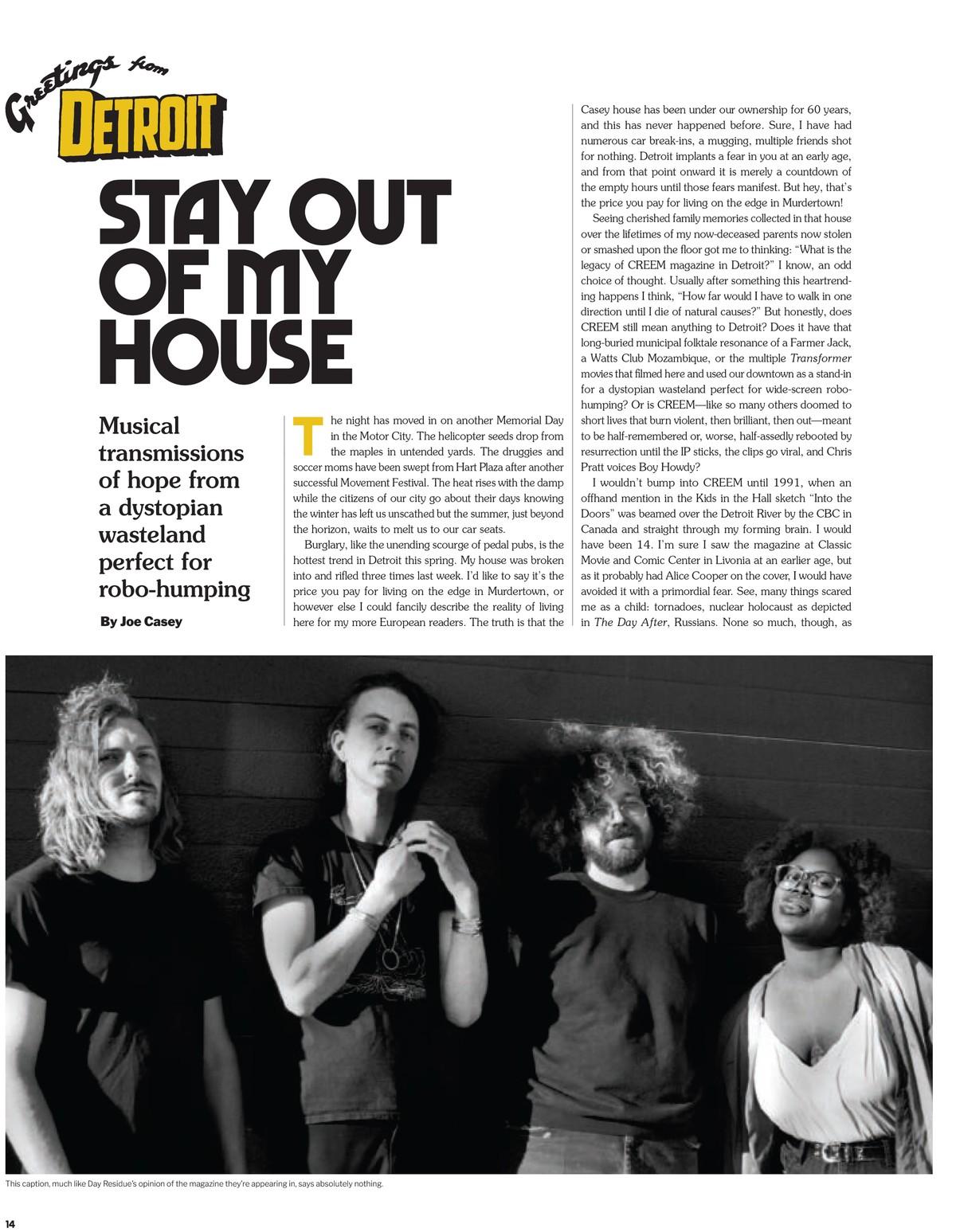Greetings from Detroit
STAY OUT OF MY HOUSE
Musical transmissions of hope from a dystopian wasteland perfect for robo-humping.
September 1, 2022


The night has moved in on another Memorial Day in the Motor City. The helicopter seeds drop from the maples in untended yards. The druggies and soccer moms have been swept from Hart Plaza after another successful Movement Festival. The heat rises with the damp while the citizens of our city go about their days knowing the winter has left us unscathed but the summer, just beyond the horizon, waits to melt us to our car seats.

